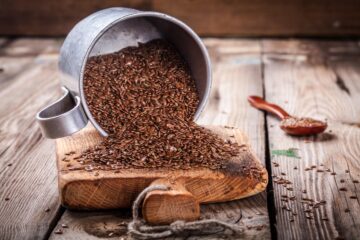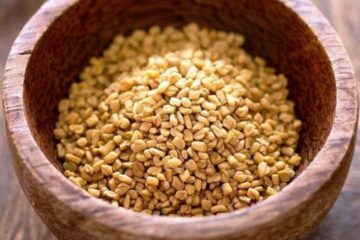Name:
St. John’s Wort is a common name for the plant species Hypericum perforatum. This perennial plant belongs to the Hypericaceae family.
Description:
St. John’s Wort is characterized by its yellow, five-petaled flowers with numerous, prominent stamens. When crushed, the flowers release a red oil, a characteristic that contributes to the plant’s medicinal properties. The leaves of St. John’s Wort are oblong and dotted with tiny translucent spots when held to light. The plant typically grows up to 1 to 3 feet in height.
Medicinal Uses:
- Depression Treatment: St. John’s Wort, due to its active compounds like hypericin and hyperforin, is known to potentially increase the levels of brain chemicals including serotonin, dopamine, and noradrenaline. These chemicals play a significant role in mood regulation, making this herb a focus in depression treatment research. The National Institutes of Health (NIH) has cited studies suggesting that St. John’s Wort might be as effective as standard antidepressants for mild to moderate depression, and potentially carries fewer side effects. This information is available on the NIH’s National Center for Complementary and Integrative Health website, specifically at: https://www.nccih.nih.gov/health/st-johns-wort. A review conducted by the Cochrane Database of Systematic Reviews, which encompassed 29 international studies, found that this herb was more effective than a placebo for treating mild to moderate depression, and was similarly effective as standard antidepressants. This review is accessible at: https://www.cochranelibrary.com/cdsr/doi/10.1002/14651858.CD000448.pub3/full.
- However, its efficacy in treating severe depression remains uncertain, and healthcare professionals, including those at the Mayo Clinic, caution against relying solely on St. John’s Wort for severe depressive cases. This cautionary advice is provided by Mayo Clinic at: https://www.mayoclinic.org/drugs-supplements-st-johns-wort/art-20362212.
- Anti-Inflammatory Properties: St. John’s Wort has also attracted research interest for potential anti-inflammatory benefits. Initial studies suggest the plant may have compounds capable of inhibiting inflammatory pathways, but comprehensive and robust research is still required to fully understand these mechanisms and the potential applications of St. John’s Wort in this context.
- Antiviral Properties: Laboratory studies have presented intriguing possibilities of St. John’s Wort possessing antiviral properties. This potential arises from the herb’s active compounds that might interfere with viral replication processes. Nevertheless, these laboratory findings are still in early stages and require further exploration in clinical trials to ascertain their practical implications in medical treatments.
- Wound Healing: There is historical precedent and some preliminary scientific research indicating St. John’s Wort’s potential use in wound healing. Its anti-inflammatory and antimicrobial properties might contribute to promoting wound closure and preventing infection. However, these traditional and preliminary scientific claims require further confirmation through more extensive, controlled clinical trials to validate their effectiveness and safety.
- Anxiety and Insomnia: St. John’s Wort has been explored as a possible treatment for anxiety and sleep disorders. The bioactive compounds, mainly hypericin and hyperforin, are thought to influence neurotransmitters in the brain that regulate mood and sleep. Although some studies have reported a positive effect on anxiety symptoms and sleep quality, the data is mixed, and more research is needed to confirm these potential benefits. The National Center for Complementary and Integrative Health (NCCIH) recommends individuals consult a healthcare provider before using St. John’s Wort for these conditions, given the herb’s possible interaction with other medications. This recommendation can be found on the NCCIH website at: https://www.nccih.nih.gov/health/st-johns-wort.
- Menopausal Symptoms: There is interest in the potential of St. John’s Wort to alleviate symptoms associated with menopause, such as mood swings and hot flashes. However, the current body of research provides limited and inconsistent evidence regarding its effectiveness in this area. Any women considering St. John’s Wort for menopausal symptoms should consult with their healthcare provider due to the herb’s potential for significant drug interactions and side effects. More information can be found on the NCCIH’s webpage dedicated to St. John’s Wort at: https://www.nccih.nih.gov/health/st-johns-wort.
- Skin Conditions: Topical application of St. John’s Wort has been investigated for managing various skin conditions, owing to its anti-inflammatory and antimicrobial properties. Some studies suggest that it may be beneficial in treating minor wounds, burns, and skin inflammation. However, robust clinical evidence is limited, and further research is needed to substantiate these claims. People should exercise caution when applying St. John’s Wort topically, as it can increase the skin’s sensitivity to sunlight, leading to severe sunburn. This safety information is provided by the NCCIH at: https://www.nccih.nih.gov/health/st-johns-wort.
- Safety Considerations and Drug Interactions: Despite St. John’s Wort’s potential medicinal uses, safety considerations, especially regarding drug interactions, are paramount. This herb can interact with many medications, leading to reduced drug effectiveness or increased side effects. Notably, it can affect the efficacy of birth control pills and anticoagulants, among others. Thus, it is critically important to consult with a healthcare provider before starting or discontinuing the use of St. John’s Wort, particularly if taking other medications. These safety considerations underscore the necessity of maintaining open communication with healthcare professionals when considering any new treatment or supplement, including natural ones like St. John’s Wort.
Origin and Distribution:
Originally, St. John’s Wort is native to Europe but has since been naturalized to many parts of the world, including North and South America, Australia, and Asia. It is commonly found in meadows, pastures, and along the edges of woods and roadsides.
Cultivation and Care:
St. John’s Wort prefers full sun and well-drained soil. The plant is fairly drought-resistant and requires little to moderate watering. It is a hardy plant that requires minimal care and is known for its resilience against pests and diseases.
Harvesting and Storage:
The best time to harvest Echinacea is in late summer when the plants are in full bloom. The roots, leaves, and flowers are all used in medicinal preparations. After harvesting, the plant parts can be dried and stored in a cool, dark place for later use.
Uses:
Culinary Uses: St. John’s Wort is not typically used in culinary applications.
Medicinal Uses: St. John’s Wort has been widely used in traditional medicine for its antidepressant and anti-inflammatory properties. It contains active compounds like hypericin and hyperforin that are thought to increase the levels of certain brain chemicals like serotonin, which can help improve symptoms of depression. (National Institutes of Health, https://www.nccih.nih.gov/health/st-johns-wort).
Other Uses: The plant is sometimes used in topical applications for its purported skin healing properties.
Safety Information:
St. John’s Wort is generally safe when used appropriately. However, it can cause side effects such as dry mouth, dizziness, and sensitivity to sunlight. Importantly, it can interact with many medications, including antidepressants, birth control pills, and warfarin, among others. Therefore, it is crucial to consult with a healthcare provider before starting St. John’s Wort, especially if taking other medications (Mayo Clinic, https://www.mayoclinic.org/drugs-supplements-st-johns-wort/art-20362212).
Historical and Cultural Significance:
St. John’s Wort has a rich history dating back to ancient Greece, where it was used for various ailments. The plant has been associated with John the Baptist, and its flowering around his feast day (June 24th) led to its common name.




